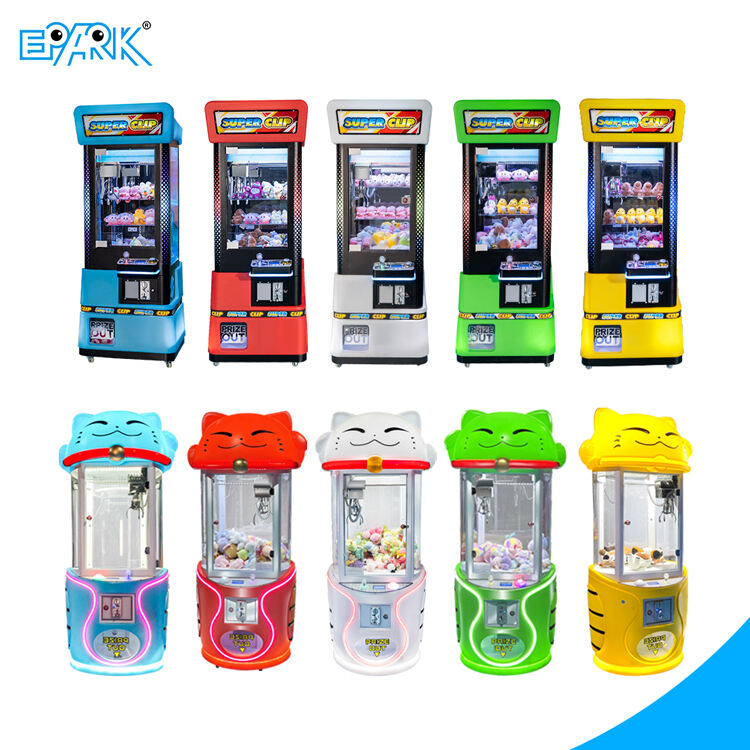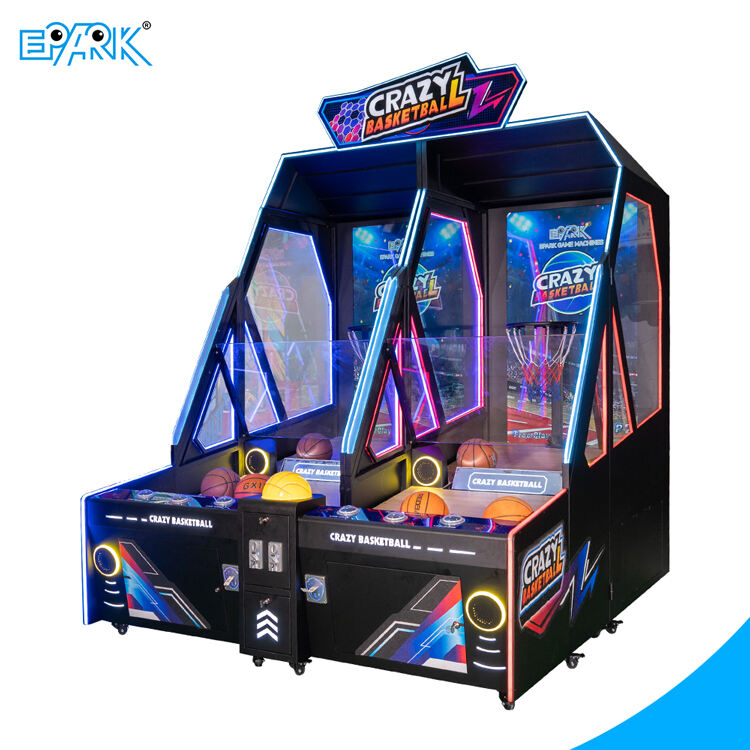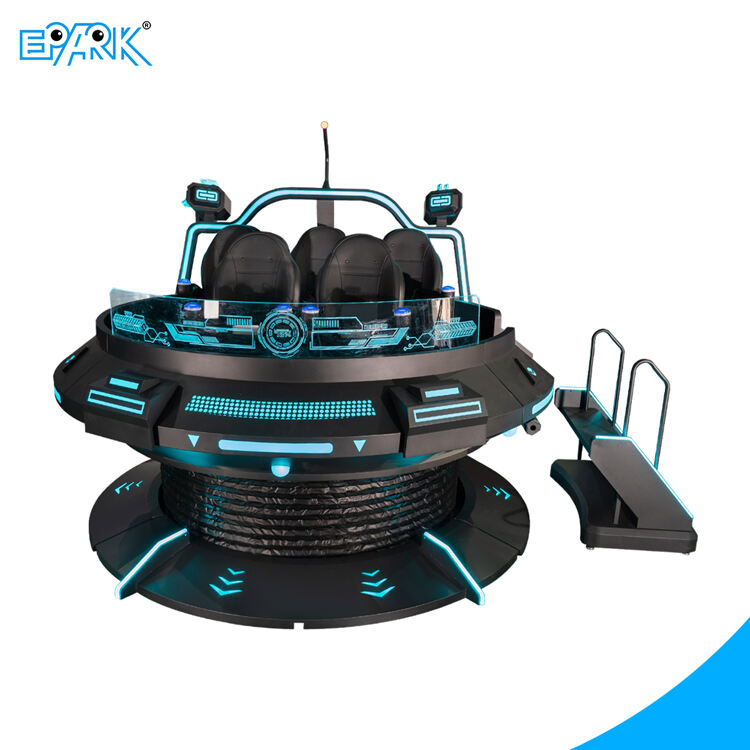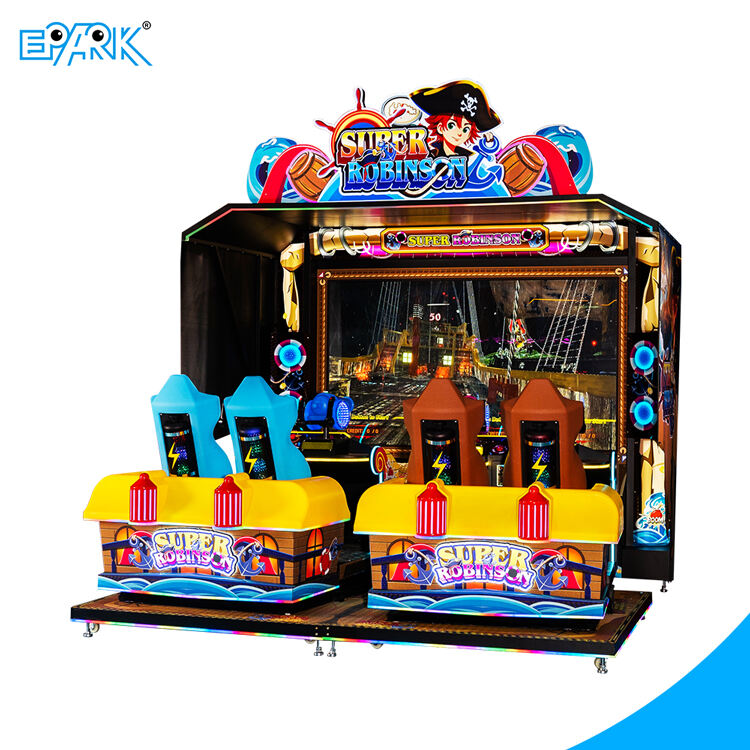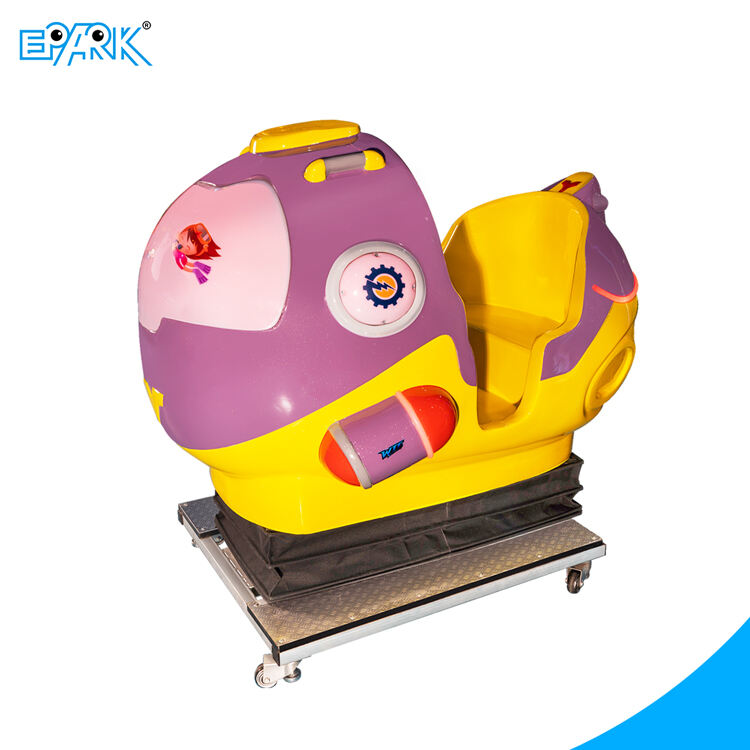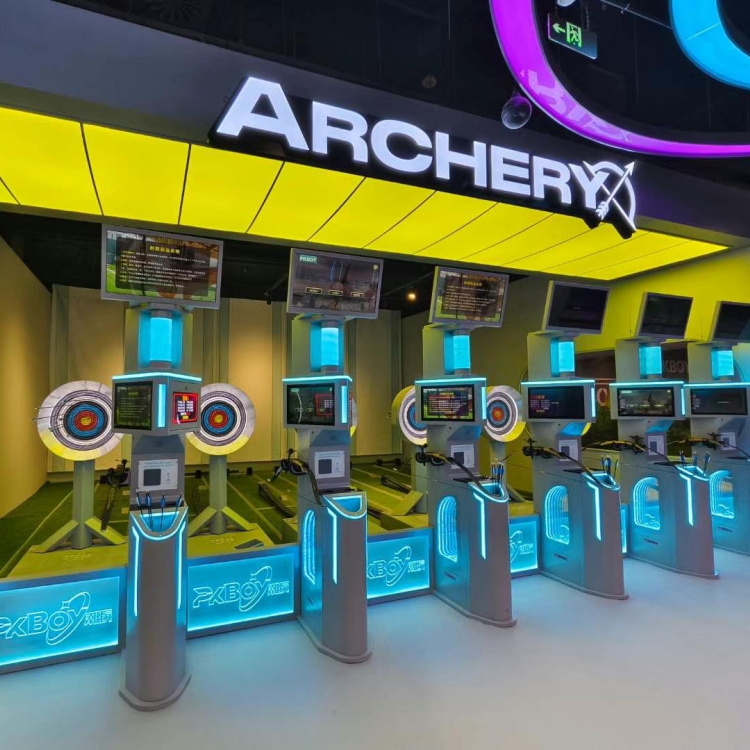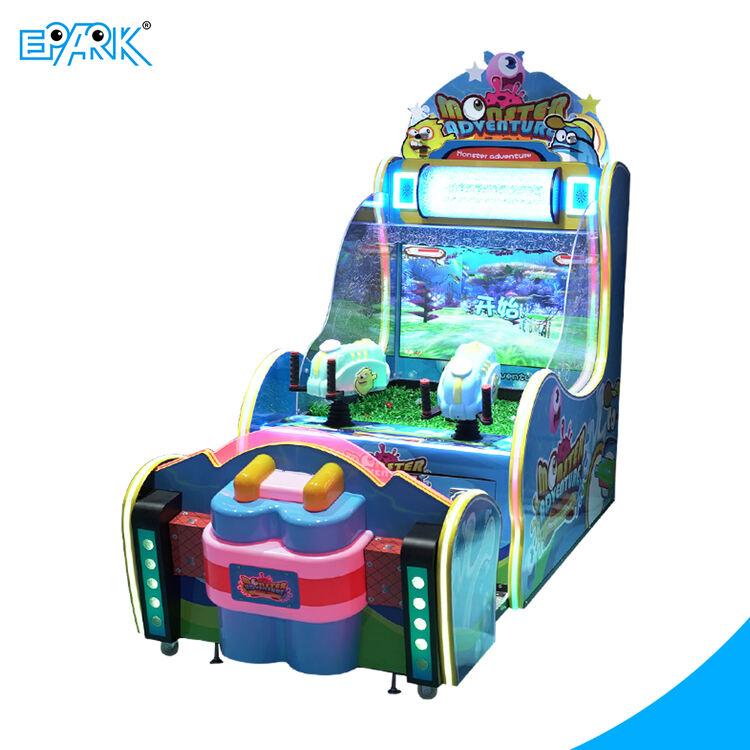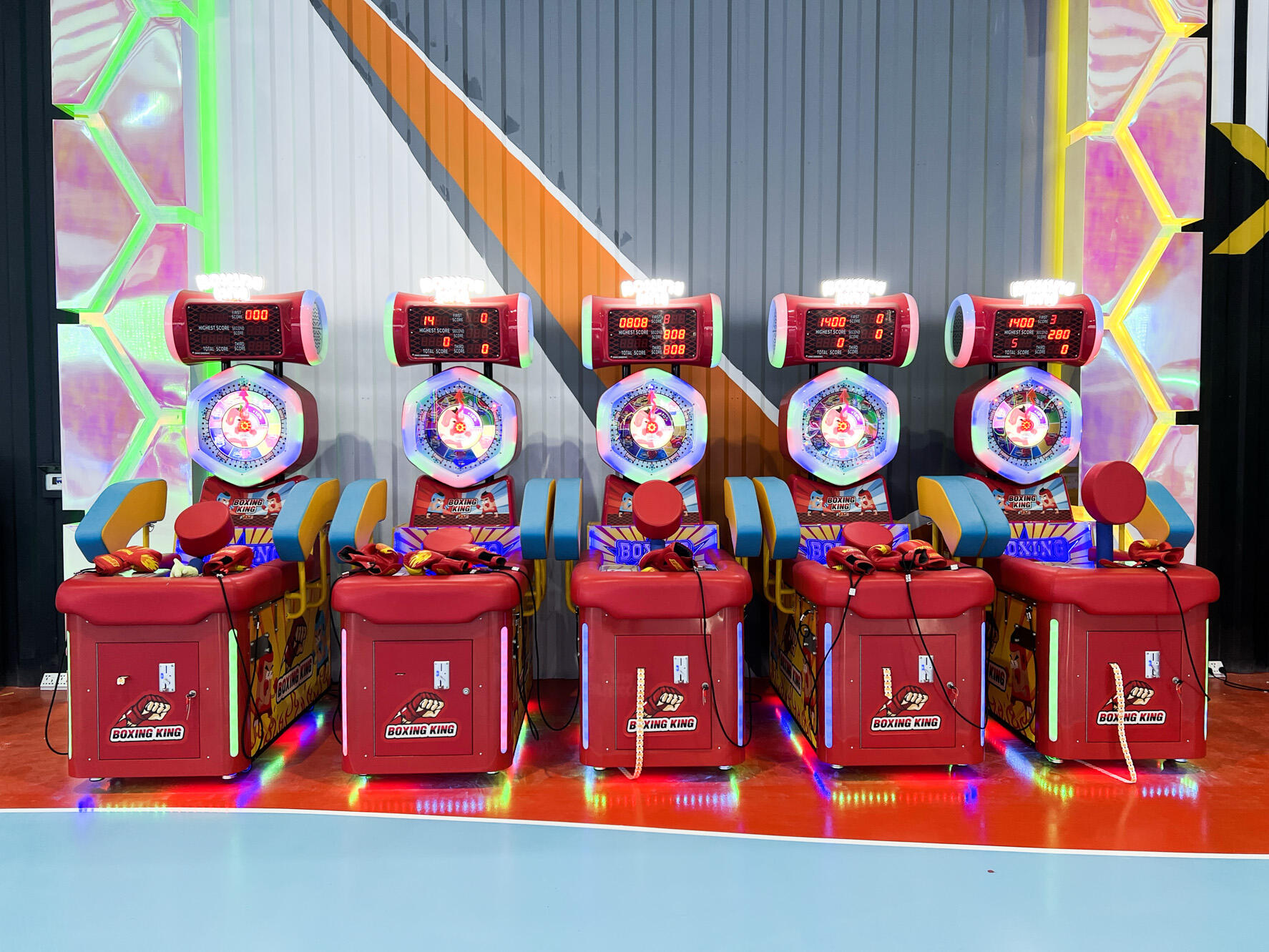Reys Arcade Məşəyinin İnkişafi
Pul-Universum Klasiklərindən Hiper-Realistik Simulyatorlara
Yarış simulatoru avtomatlarının təkamülündən bəhs edərkən həm texnoloji inkişaf, həm də kompüter oyunlarının kütləvi səviyyəyə necə yüksəldiyini görə bilərik. Bu hekayə əslində Pole Position və OutRun kimi köhnə mərmili maşınlarla başlayır. Onları xatırlayırsınız? Onlar yalnız keçmişdə oynanmaq üçün əyləncəli deyildilər, həm də indi yarış oyunlarında standart hesab edilən şeyləri formalaşdırmada real rol oynayırdılar. İnsanlar onlara o dövrdə olduqca təəccübləndirici olan qrafikləri və digər oyunlardan fərqli olaraq tamamilə yeni hiss edilən oynanış üslubları ilə maraqlandı. Bu erkən oyunlar əslində sonrakı bütün yarış oyunları üçün əsas quruluşu hazırladı və inkişaf etdiricilərə gələcəkdə daha da irəliləmək üçün möhkəm bir platforma yaratdı.
Texnologiya inkişaf etdiyi zaman yarış maşınları arakad mühitində daha yaxşı hala gətirildi. Onlar pixel şəkilli fiqurlardan həqiqi həyat kimi görünən tam realist trassalara qədər inkişaf etdi. Yaxşılaşmış vizual təsvirlər və daha yaxşı idarəetmə bu oyunların müxtəlif insanlar tərəfindən populyarlaşmasına səbəb oldu. Həvəskar yarış oyunçularından hətta arakadları ikinci evləri kimi qəbul edən ciddi yarışçılaradək hər kəs bu oyunları oynayırdı. O dövrdə sənaye də böyük dəyişikliklərə uğradı. Böyük oyun sərgiləri bir-birini təqib edərək yeni rəqabətli yarış konfiqurasiyalarını nümayiş etdirdi və bu da o vaxt hər kəsi təəccübləndirirdi.
Sənaye göstəriciləri bizə onu göstərir ki, bu günklərdə arakad qeyms səhnəsi həqiqətən də inkişaf etməkdədir. Məsələn, Technavionun ən son rəqəmlərinə əsasən, 2025-ci ildən 2029-cu ilə qədər bütün bazar üçün təxminən 2 milyard ABŞ dolları artım proqnozlaşdırılır; insanların çox sevdiyi yüksək dəqiqlikli yarış simulatorları da bunun içərisində yer alır. Birləşmiş illik artım tempi isə onların proqnozuna görə 1,9 faiz təşkil edir. Bütün bunlar nə deməkdir? Yəni, arakadlar sadəcə sağ qalmır, həm də inkişaf edir. Biz yeni texnologiyaların inteqrasiyasını, daha yaxşı oyun təcrübəsini və hətta virtual həqiqət qurğularının ənənəvi pul qəbul edən maşınların yanında görünməsini müşahidə edirik. Sektorda istehlakçı davranışlarının dəyişməsinə və rəqəmsal alternativlərə baxmayaraq, əhəmiyyətli qalmaq üçün yeni yollar tapmaqda davam edilir.
Texnologiyada atılım: Qüvvət geri bildirimi ilə 4D hərəkətə
Gücləndirilmiş hərəkət ötürmə texnologiyası yarış simulator oyunlarında onların real hiss olunmasını təmin edən ən böyük dəyişikliklərdən biri olmuşdur. Oyunçular divara və ya çınqılağa qarşı hərəkət edərkən asfalt üzərində hərəkətdən fərqli olaraq bu təsirləri idarəetmə dəsmalı vasitəsilə hiss edirlər ki, bu da bütün təcrübəni daha dərin və əyləncəli edir. Bu fərqi qısa müddətdə kəşf edən kafedralar öz növbəsində inkişafın digər aspektlərinə də diqqət yetirdilər. Həm də innovasiyalardan danışanda, bu cür texnologiya həmçinin 4D hərəkət sistemləri kimi digər maraqlı şeylərə də yol açıb ki, bu da intensiv dönərlər və ya tullanmalar zamanı oturacağın hərəkət etməsinə imkan verir.
4D hərəkət texnologiyasının əlavə edilməsi oyunçuların cəlb olunmasını tamamilə yeni səviyyəyə qaldırır. Oturacaqlar ekran görüntüsünə uyğun hərəkət etdikdə, oyunçular bütün duyğu orqanları ilə əsas hərəkətə tamamilə batır. Namco və Sega kimi arakod oyun istehsalçıları bu cür yeniliklərin üstünlüklərini illərdir təqdir edirlər. Onlar bu yenilikləri klassik arakod maşınlarının müasir dövrə keçidində oyunların klassik həyacanını saxlamaqla inqilab yaradan amil kimi görür. Məsələn, Technavionun ən son hesabatına nəzər yetirsək, onlar hərəkət texnologiyasına malik maşınlarla oynayan oyunçuların adi maşınlarla oynayanlara nisbətən daha çox vaxt sərf etdiyini müəyyən ediblər. Təbii ki, bu da onu göstərir ki, partlayışları və toqquşmaları fiziki şəkildə hiss etdikdə insanlar oyunlara daha çox daxil olurlar.
Sənaye tendensiyaları açıq şəkildə mürəkkəb oyun təcrübələri üçün artan tərəqqi göstərir. Bu texnologiyaların inkişaf etməsi davam edərkən, bunlar dünya genəlindən oyunçular üçün daha zengin və daha etaktiv təcrübələr va'd edir.
8-Oyunculu Showdown: Oyunun Ən Sosial Təcrübəsi
Arkad oyunları ilərələyən illərlə eyni zamanda tək oyunçu üçün əyləncədən çox, insanların yarış maşınları ətrafında birləşdiyi çoxoyunçu fəaliyyətə doğru irəliləmişdir. Bir çox müasir oyunlar eyni anda səkkiz oyunçunu idarə edə bilir və bu da arkadları dostların bir-birinə qarşı sürətli yarışlarda rəqabət apardığı cəlbedici məkanlara çevirir. Daytona USA və Mario Kart Arcade GP kimi oyunlar bu maşınların nə qədər asılılıq yarattığını düşünərkən aklımıza gəlir. Bu oyunlar oyunçuları güc artıran və maneələr olan dəhşətli yarışlara atır ki, bu da hamını gülərək və qışqıraraq keçirsin. Əslində bu oyunların nə qədər səciyyəvi olduğu insanları ümumi həyəcan vasitəsi ilə birləşdirməsidir. İnsanlar mövqe uğrunda mübarizə apararkən tez bir dostluq yaradırlar və bu da pulları bitdikdən sonra belə uzun müddət yadda qalan anılar yaradır.
Axınlıqda daha çox insan çoxistifadəçili yarış turnirlərinə qoşulur, bu da insanların oyunlar vasitəsilə qoşulmaqdan necə zövq aldığını göstərir. Technavio tədqiqatı çoxistifadəçili rejimlərdən gəlir əldə edən arakad məkanlarının real uğur qazandığını, bu oyunların operatorlar üçün ciddi pul gətirdiyini göstərir. Oyunçular tez-tez dostları və ya tərəfdaşları ilə yarış zamanı aldıkları həyəcan və arakadlardakı intensiv sessiyalarda özünü daha böyük bir şeyin hissəsi kimi hiss etməyi müzakirə edirlər. Həm qalib gəlmək istəyi, həm də bəzən komanda yarışlarında hamının koordinasiya etdiyi birgə iş birliyi arasında yaxşı bir balans yaranıb. Çoxistifadəçili yarışlar sadəcə arakad mədəniyyətini diri saxlamır, həm də icmaları ümumi təcrübələr ətrafında birləşdirərək onu daha da gücləndirir.
E-sport Üzmü: Arcade Kabinetlərdən Dünya Şampionatlarına
Kibersport populyarlaşmaya başlayandan bəri yarış oyunları tamamilə dəyişdi və indi artıq DreamHack və ESL kimi tədbirlərdə keçirilən böyük tədbirlərə çevrilib. Bu dəyişiklik yalnız oyunlar üçün daha çox seyirci cəlb etməyib, şirkətlərin də məşhur brendlərlə əməkdaşlıq etməsinə səbəb olub və bu da sponsorluq sazişlərinin daha da böyüməsinə gətirib çıxarıb. Məsələn, Gran Turismo Championships və ya Forza Racing Championship kimi yarışlara nəzər yetirin – onlar internetdə böyük auditoriya cəlb edir. Keçən il yalnız bir turnirdə 5 milyondan artıq seyirci canlı yayımları izləyib və mükafat fondları hər mövsümdə daha da artıb. Hazırda kifayət qədər yaxşı kompüter avadanlığına sahib olan hər kəs evində oturub dünyadakı peşəkarlarla yarışa bilər.
Konkretiv oyunlar sənayetinin içindən xəbərdar olanlar kimi, onlar bu tendensiyaya əsasən arakad məkənlərinin konsepsiyasını dəyişə biləcəyinə inanırlar. Kibersporun yayılması ilə ənənəvi pul qəbul edən oyun maşınlarının onlayn turnirlərlə birləşməsi yeni sərhədlər yaratmaqdadır və müxtəlif sosial qat qruplarından insanları cəlb etməkdədir. Bu oyunların üzərində işləyən tərtibatçılar üçün önəmli imkanlar mövcuddur. Oyunçular üçün də arakad məkənlərinə girdikləri zaman yeni təcrübələr yaşayırlar. Kibersport avtomobil yarışları dünya miqyasında böyük biznesə çevrilmişdir, lakin bəziləri bu tendensiyanın arakad məkənlərinin ilk növbədə xüsusi olmasına təsir edə biləcəyindən narahatlıq göstərir. Buna baxmayaraq, əksəriyyət hələ də köhnə məftunluqla yeni nəsil rəqabətinin arakad mədəniyyətini növbəti nəsil üçün diri saxlayacağına inanır.
Həqiqi yarışın xüslətlərini bənzətdən kokpit dizaynları
Yarış simulatorlarının ən yeni nəsil oyunları kokpit dizaynında çox irəliləyib. Onların çoxu indi real yarış maşınlarına praktiki olaraq bənzəyir və oynanmağı daha rahat edən bir çox ergonomik detallarla təchiz olunub. Onları fərqləndirən əsas şey, tənzimlənə bilən oturacaq vəziyyətləri, həssas dəbdəbəli dülər və hətta real yarış maşınlarında olduğu kimi işləyən ayaq pedalı kimi şeyləri birləşdirməsidir. Bu cür konfiqurasiyaları sınayan oyunçular tez-tez hər şey çox real hiss olunduğu üçün əslində hərəkətə daşınmış hissi təşkil edildiyini qeyd edirlər. Bəziləri küncələrdə qəfil sürətlə dönmə zamanı təxminən rezin yanarkən yaranan iyin də hiss olunduğunu deyir!
Ən yaxşı yarış simulatorları öz quruluşları ilə diqqət çəkir, çünki onlar bazarın digər hər hansı bir maşınından fərqli hiss olunan kabinlər ətrafında qurulub. Qüvvə geri əlaqəli idarəetmə dəhlizləri olan maşınları nəzərə alın, hansı ki, zəncirli zolaqdan keçərkən və ya maşın yoldan çıxarkən həqiqətən də titrəyir. Oyunçular bu möcüzəvi hissi əldə edirlər ki, onlar özü hərəkətin içərisindədirlər. Sorğu və satış rəqəmlərinə əsasən, insanlar bu cür dərin immersiv təcrübələr üçün xüsusən kinotəsadüflərə qayıtmaqda davam edirlər, burada hər detallar əhəmiyyətlidir. Bütün sənaye oyunları yalnız vizual olaraq deyil, həm də fiziki olaraq daha real hiss etməyə doğru hərəkət edir. Bu realist quruluşlara investisiya edən kinotəsadüflərin sahibləri müştəri saxlama və gəlir artırma baxımından daha yaxşı nəticələr əldə edirlər, bu da çoxsaylı yeni quraşdırmaların yalnızca parlaq qrafiklərdən deyil, həqiqi sürüş hisslərinə diqqət yetirməsinin səbəbini izah edir.
VR Inteqrasiyası və Çevrə Etkilər
VR texnologiyası bu gün insanın avtomat maşın oyunlarından gözlədiyi şeyi tamamilə dəyişib. Sadəcə ekrana baxmaq əvəzinə, oyunçular indi tam 3D mühitlərin içərisində olur ki, bu da həqiqətə çox yaxın hiss edilir. Adi oyunlarla VR təcrübələri arasında yarış hissinin nə qədər intensiv olduğu baxımından fərq göy ilə yer qədərdir. Müasir VR mağaraları tez-tez əlavə xüsusiyyətlərlə də doludur. Təchizatın çoxunda hər tərəfdən səs yayılan surround səs sistemləri, sürəti simulyasiya etmək üçün hava yayan ventilyatorlar var və bəzi hallarda yarışın müəyyən hissələrində həqiqi iyin buraxılması da nəzərdə tutulub. Bütün bu kiçik detallar birlikdə maşının dördlüyündə, yəni həqiqi avtomobilin sükanında oturduğunu unudub kafedraların oyun avtomatında oturduğunu hiss etməyə yardım edir.
Rəqəmlər bizə VR-in təyyarələrdə böyük miqdarda artıq qəbul edildiyini, oyunçuların daha uzun müddət qalmaqla daha yüksək təminat səviyyəsi göstərdiyini göstərir. Əksər oyun inkişaf etdiriciləri xüsusilə yarış oyunları üçün VR-ni irəli getmək üçün yol kimi görür. Yeni texnologiyalar daima çıxır və həqiqi dünya bitdiyi yerlə virtual dünya arasındakı fərqi müəyyən etməyi daha da çətinləşdirir. İnsanları əslində cəlb edən yalnız vizual effektlər deyil, həm də onların kabinlərdə oturduqları zaman hər şeyin necə toxunulardan hiss olunduğudur. Bu da təyyarə sahibləri tərəfindən qeyd edilir, çünki indi müştərilər sadəcə qısa oyun sessiyasından daha çox şey istəyirlər. Görünüşlərin, səslərin və hətta titrəmələrin birləşməsi, ənənəvi ekranların təqdim edə bilmədiyi bir təcrübə yaradır. Bu texnologiyalar təkmilləşdikcə təyyarələrin əyləncəsi üçün tamamilə yeni bir dövrə baxırıq.
Nostalji Faktoru: Çağırlıq Cari Texnologiyalar vasitəsiylə Yenidən Canlandırmaq
Bu gün maşınlarla avtomatik yarışlar müəyyən şəkildə keçmişdən gələn isti hissləri ən son texnologiyalarla birləşdirərək hər yaşdan insan üçün əyləncəli edir. Xüsusilə yaşlı insanlar yenidən avtomatlar zalına getməyə və uşaqlıqda oynadıqları eyni oyunlara dalmağa həvəslənirlər. Kim əvvəllər Pole Position və ya Out Run oyunlarını oynamağı xatırlamır? Tam olaraq bu yaddaşlar retro üslublu maşınların yenidən qayıtmasına səbəb olur. Rəqəmlər də maraqlı bir şey göstərir - klassik avtomat görünüşünə maraq artıb və bu gün modern yeniləmələrlə təmin olunub. Məsələn, Capcom və Sega kimi oyun istehsalçıları da nostalji dalğasına qoşulublar və yeni oyunlarında köhnə mühitləri birləşdiriblər. Nəticədə biz sadəcə keçmişə qayıtmaq üçün olan maşın görmürük, həm də uzun illərdir tərəfdar olanlar, həm də yeni gələnlər üçün yaxşı işləyən bir şey alırıq.
Həqiqi Avtomobil Maraqını Təsir Edən Faktorlar
Avtomobillər və motorsportlarla real maraq yaratmaq üçün yalnız əyləncəli oyunlar deyil, həm də arakadə rəqabət oyunlarıdır. Tədqiqatlar göstərir ki, uşaqların bu oyunları oynadığı və avtomobil mədəniyyətinə olan maraqlarının artması arasında birbaşa əlaqə mövcuddur. Çoxları avtomobillərə bu oyunlar vasitəsi ilə ilk dəfə maraq göstərirlər. Məsələn, peşəkar yarış sürücülərinin bir qismi yerli arakadə rəqabət maşınlarında saatlarca keçirdikləri vaxtdan başlayaraq karyeralarına start veriblər. Bəzi sorğular göstərib ki, bu oyunları böyüyərkən oynayan insanların çoxu bu gün hələ də real yarışlara getmək istəyirlər. Virtual yarış zolaqlarının real həyat maraqları ilə əlaqəsi ilə keçən illər ərzində izlənilən hadisələr olduqca təəccübləndirici olub. Arakadə rəqabət maşınları nəsil nəsil təsirini davam etdirir və heç kimin gözləmədiyi yollarla rəqəmsal həyəcanı və real dünya avtomobil entuziazmini birləşdirir.
SSS
Bazı klasik kabinetli yarış oyunları nelerdir?
Klassik sərbəst yarış oyunları arasında "Pole Position" və "OutRun" daxil olmaqla, bu oyunlar 1980-lı və 1990-ci illərdə populyar idi.
İllər boyu yarış arcade maşınları necə inkişaf etdi?
Yarış arcade maşınları sadə grafikdən hyper-realistik ortamlara çevrilmişdir, gaming təcrübəsini artırmaq üçün qüvvə geri bildirimi və 4D hərəkət kimi texnologiyaları daxil edib.
Çoxoyunculu rejimlər arcade gaming-də nə qədər əhəmiyyət kəsb edir?
Çoxoyunculu rejimlər oyuncuların başqa oyuncullarla müsabiqəli yarışlarda iştirak etməyə imkan verərək arcade gaming-in sosial yanını artırır, dostluq və rivaqliyi təşviq edir.
VR texnologiyası necə yarış arcade maşınlarına təsir etdi?
VR texnologiyası yarış arcade maşınlarının realizmini böyük dərəcədə artırmışdır, immersiv 3D ortam və hissələri daxil edərək gameplay-i intensivləşdirir.
Racing arcade oyunları necə real dünya avtomobil mədəniyyətinə təsir etdilər?
Spor arkazi oyunları bir çox şəgirliyi avtomobil hobi və karyera sahələrinə keçməyə ilham verib, maşın mədəniyyətinə daha böyük dərəcədə qatılmağa kömək edir.
Mündəricat
-
Reys Arcade Məşəyinin İnkişafi
- Pul-Universum Klasiklərindən Hiper-Realistik Simulyatorlara
- Texnologiyada atılım: Qüvvət geri bildirimi ilə 4D hərəkətə
- 8-Oyunculu Showdown: Oyunun Ən Sosial Təcrübəsi
- E-sport Üzmü: Arcade Kabinetlərdən Dünya Şampionatlarına
- Həqiqi yarışın xüslətlərini bənzətdən kokpit dizaynları
- VR Inteqrasiyası və Çevrə Etkilər
- Nostalji Faktoru: Çağırlıq Cari Texnologiyalar vasitəsiylə Yenidən Canlandırmaq
- Həqiqi Avtomobil Maraqını Təsir Edən Faktorlar
-
SSS
- Bazı klasik kabinetli yarış oyunları nelerdir?
- İllər boyu yarış arcade maşınları necə inkişaf etdi?
- Çoxoyunculu rejimlər arcade gaming-də nə qədər əhəmiyyət kəsb edir?
- VR texnologiyası necə yarış arcade maşınlarına təsir etdi?
- Racing arcade oyunları necə real dünya avtomobil mədəniyyətinə təsir etdilər?

